7 Factors That Influence Solar Power System Design
Imagine designing a solar power system is like solving a complex puzzle. Each piece must fit perfectly to ensure optimal energy production and efficiency. In this discussion, we will explore the seven factors that influence solar power system design.
From the impact of your location to the availability of sunlight, climate considerations, and even budget constraints, these factors play a crucial role in determining the design and effectiveness of your solar power system.
So, grab your metaphorical puzzle pieces and let’s explore the fascinating world of solar power system design together.
Key Takeaways
- Latitude and longitude, as well as regional weather conditions, are important factors in determining the solar energy potential and production of a solar power system.
- Proper solar panel placement and angle are crucial for maximizing efficiency and avoiding shading and obstructions from buildings and trees.
- The size and shape of available space, as well as the ground conditions, need to be considered when designing a solar power system.
- Other considerations include understanding energy consumption patterns, incorporating energy efficiency improvements, considering the budget and available incentives, and ensuring compliance with building codes and zoning regulations.
Location’s Impact on Solar System Design
When designing a solar power system, the impact of the location on solar system design becomes a crucial factor to consider. The quantity of sunshine received at a specific location is influenced by factors such as latitude, longitude, and regional weather conditions.
Areas closer to the equator generally have higher solar energy production potential due to their proximity to the sun. Solar panel placement can be optimized by calculating the solar radiation received at a specific location. Different locations experience varying amounts of sunshine throughout the year, which directly impacts the efficiency and energy production of solar panels.
Latitude and longitude play a significant role in determining the solar energy potential of a location. Areas near the equator, with lower latitudes, receive more direct sunlight throughout the year, resulting in higher solar energy production.
On the other hand, regions farther from the equator, with higher latitudes, receive sunlight at an angle, reducing the overall solar radiation received. Similarly, the longitude of a location affects the time and duration of sunlight received, as the Earth rotates on its axis.
Regional weather conditions also impact solar energy production. Cloud cover and atmospheric conditions can reduce the amount of sunlight reaching the solar panels, decreasing their efficiency. It’s essential to consider the historical weather patterns of a location to accurately assess the solar energy potential and design a solar power system accordingly.
Sunlight Availability and Efficiency
To optimize the efficiency of your solar power system, you need to consider factors such as solar panel placement, the angle at which the panels are installed, shading, and obstructions.
By calculating the solar radiation at your specific location, you can determine the best placement for maximum sunlight exposure.
Remember that shadows cast on the solar panels can significantly reduce their efficiency, so it’s crucial to avoid any objects that may obstruct the sunlight.
Solar Panel Placement
Solar panel placement plays a crucial role in maximizing energy production by optimizing exposure to direct sunlight and ensuring efficient operation. Here are three factors to consider when placing solar panels:
- Orientation and tilt: Properly orienting solar panels towards the sun’s path and adjusting their tilt angle can significantly impact their efficiency and energy generation capabilities. Panels facing south in the Northern Hemisphere and north in the Southern Hemisphere generally receive the most sunlight.
- Shading: It’s important to avoid shading from buildings, trees, or other obstructions as they can reduce the efficiency and performance of solar panels. A thorough analysis of potential shading sources should be conducted before installation.
- Geographic location: Different geographic locations experience variations in sunlight throughout the year. Factors like the angle of the sun, the length of daylight hours, and seasonal variations can affect the energy production of solar panels. It’s essential to consider these variations when designing a solar power system.
Angle of Solar Panels
Properly optimizing the angle of inclination for solar panels is crucial in maximizing sunlight availability and improving the overall efficiency of the system. The angle of inclination plays a significant role in the photoelectric conversion efficiency of solar panels. Adjusting the angle according to changes in seasons, latitude, and longitude is important for improved efficiency.
The fixed inclination angle should be chosen based on maximum power generation throughout the year. The optimal angle of inclination changes based on seasons, geographical locations, and sunshine conditions. By adjusting the angle of inclination, you can maximize the power output of your solar panels.
It’s an essential factor to consider in solar power system design as it directly impacts the efficiency and performance of the system.
Shading and Obstructions
Shading and obstructions pose significant challenges to the efficiency and productivity of solar panels. When it comes to sunlight availability and efficiency, there are several factors that need to be considered:
- Buildings, trees, and other structures can obstruct sunlight and decrease energy production. It’s crucial to assess the surroundings of the solar panels to ensure they’re placed in an area with unobstructed exposure to sunlight.
- Shadows cast on solar panels can significantly reduce their efficiency. Even a small amount of shading can have a negative impact on the energy output.
- To maximize energy production, it’s recommended to trim branches or install solar panels in unshaded areas. This will ensure that the panels receive maximum sunlight throughout the day.
Considering these factors affecting solar panels, it’s essential to carefully analyze and plan the placement of solar panels to minimize shading and obstructions, thus optimizing their efficiency and productivity.
Climate and Weather Considerations
When designing a solar power system, it’s crucial to consider the impact of geographic location and seasonal weather fluctuations. The amount of sunshine received is influenced by latitude, longitude, and regional weather conditions.
Midday and summer months generally provide optimal conditions for energy generation, while cloudy days and shading can reduce energy output.
Taking into account these climate and weather considerations is essential for maximizing the efficiency and effectiveness of your solar power system.
Geographic Location Impact
The geographic location of a solar power system has a significant impact on its energy production potential, as it determines the varying levels of sunshine received.
Here are three key ways in which geographic location impacts the energy production of solar panels:
- Areas closer to the equator generally have higher solar energy production potential due to their proximity to the sun’s rays.
- Solar panel placement can be optimized by calculating solar radiation at a specific location. This helps determine the best angle and orientation for maximum energy production.
- Different locations experience varying amounts of sunshine throughout the year, which directly affects the efficiency and energy production of solar panels. Understanding these variations can help design a solar PV system that can maximize energy output throughout the year.
Seasonal Weather Fluctuations
Geographic location has a significant impact on solar energy production potential. Solar panels rely on sunlight to generate power, and changes in weather patterns can affect the amount of sunlight available. Solar energy production is highest during midday and in the summer months, while it’s lower during early morning, late afternoon, and winter.
Understanding the seasonal weather fluctuations is crucial to optimizing the efficiency and output of a solar power system. The quantity of sunlight directly impacts the efficiency and energy production of solar panels. Clear and bright days lead to higher production, while cloudy days reduce energy production.
Additionally, shading from buildings, trees, and other structures can obstruct sunlight and decrease energy production. It’s important to trim branches or install solar panels in unshaded areas to maximize output.
Roof or Ground Space Availability
Assessing the availability of roof or ground space is a crucial step in determining the feasibility and design of a solar power system. The amount of space available directly affects the size and type of solar panels that can be installed, as well as the overall system design.
Here are three key factors to consider when evaluating roof or ground space availability for a solar power system:
- Space Constraints: The size and shape of the available space will determine the number and arrangement of solar panels that can be installed. Rooftop installations may be limited by the size and orientation of the roof, while ground-mounted systems require sufficient open space. Assessing these constraints is essential for optimizing the system design.
- Obstructions: Obstacles such as chimneys, skylights, or nearby tall structures can cast shadows on the solar panels, reducing their efficiency. It’s important to evaluate the presence of any obstructions and their impact on sunlight exposure to determine the best panel placement and system design.
- Ground Condition: For ground-mounted systems, the condition of the ground plays a crucial role. Factors such as soil quality, slope, and stability need to be assessed to ensure proper anchoring and support for the solar panels. This evaluation is necessary for a safe and reliable system design.
Energy Consumption and Usage Patterns
Understanding energy consumption and usage patterns is essential for designing an efficient and tailored solar power system. By analyzing energy consumption, you can determine the appropriate size and design of the system.
Identifying peak usage times and patterns allows for the optimization of the system to handle high demand periods effectively. Similarly, analyzing off-peak energy usage patterns helps in designing a system that can store and utilize excess energy during low demand periods.
Seasonal variations in energy consumption also play a crucial role in solar power system design. By considering these variations, you can design a system that can cater to the varying energy needs throughout the year. For instance, during the summer months, when air conditioning usage increases, the system can be designed to accommodate the higher energy demand.
Another important factor to consider is energy efficiency improvements. By identifying areas where energy efficiency can be improved, you can tailor the solar power system to effectively offset higher energy consumption areas. This can include implementing energy-efficient appliances and insulation measures to reduce overall energy consumption.
Budget and Financial Considerations
To ensure the successful implementation of your solar power system, it’s important to consider the budget and financial considerations associated with its design and installation. Understanding these factors will help you make informed decisions and create a cost-effective solar array. Here are three key points to consider:
- Budget: Take into account your financial resources and any available rebates or tax incentives. These can significantly reduce the upfront costs of your solar power system, making it more affordable and cost-effective in the long run.
- Financing options: Explore different financing options such as loans, leases, or power purchase agreements. These options can help manage the upfront costs by spreading them out over time, making the investment more feasible for you.
- Cost-benefit analysis: Evaluate the financial implications of various system designs and components. By conducting a thorough cost-benefit analysis, you can optimize the performance and cost-effectiveness of your solar power system. Consider the payback period and potential long-term savings to understand the return on investment.
Regulatory and Permitting Requirements
Before installing a solar power system, it is crucial to familiarize yourself with the regulatory and permitting requirements that must be met. Understanding and complying with local regulations and obtaining the necessary permits are essential steps in the design and installation process. Failure to adhere to these requirements can result in delays, fines, or even the removal of the system.
To give you a better understanding of the regulatory and permitting landscape, let’s take a closer look at the key factors involved:
| Regulatory and Permitting Requirements | Description |
|---|---|
| Building Codes and Zoning Regulations | Compliance with building codes and zoning regulations is necessary to ensure the safe and proper installation of solar panels and related equipment. It ensures that the system is structurally sound and meets the aesthetic requirements of the area. |
| Utility Interconnection Standards | Adhering to utility interconnection standards is crucial for connecting your solar power system to the grid. These standards ensure the safe and reliable operation of the system and protect the utility infrastructure. |
| Permitting Process | Familiarizing yourself with the permitting process and obtaining the required permits is a critical step. This process may involve submitting documentation, paying fees, and undergoing inspections to ensure compliance with all relevant regulations. |
| Inspection and Approval | After installation, the system must meet inspection criteria and obtain approval from the relevant authorities. This step ensures that the system is correctly installed and meets all safety and performance standards. |
Conclusion
As you explore the technical and analytical realm of solar power system design, you uncover a world where the sun’s rays become the architects, shaping the energy landscape.
With factors like location, sunlight availability, climate, space, energy consumption, budget, and regulations, a symphony of elements harmonize to create a sustainable and efficient design.
Through meticulous planning and attention to detail, solar power systems emerge as the shining stars, illuminating a brighter and greener future.
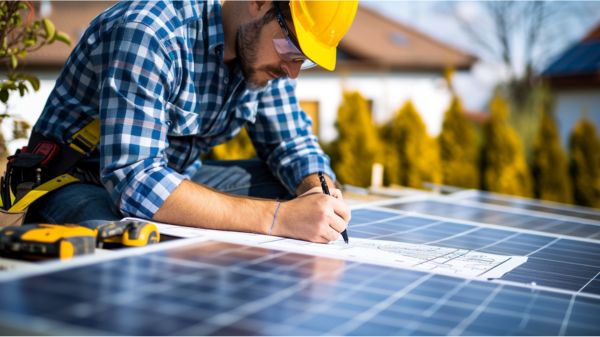

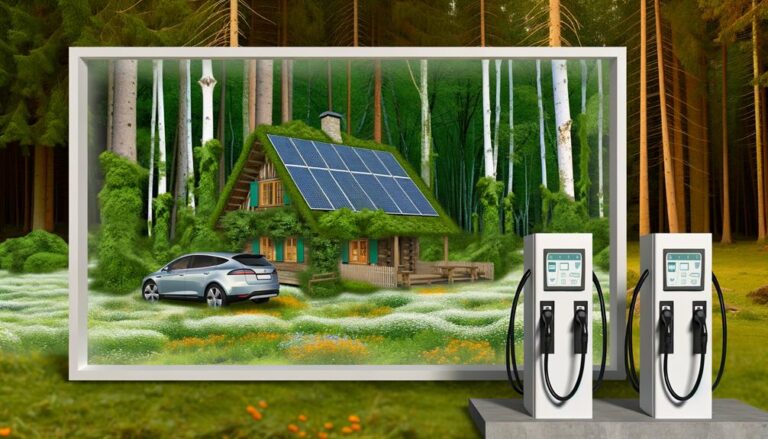
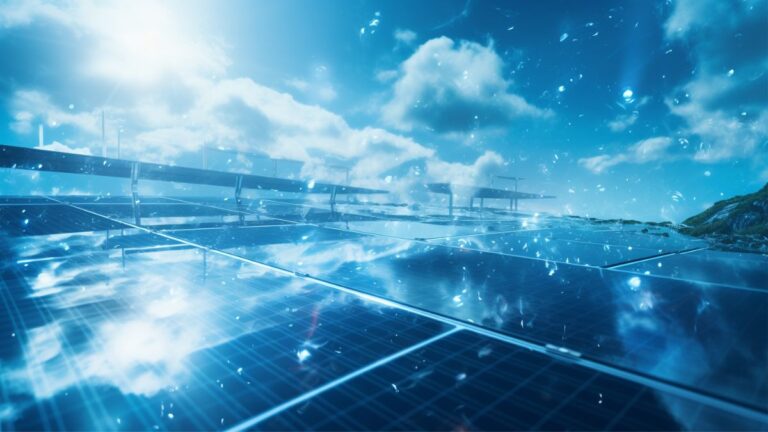
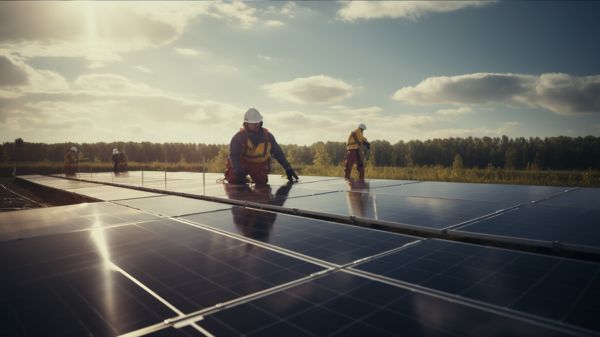
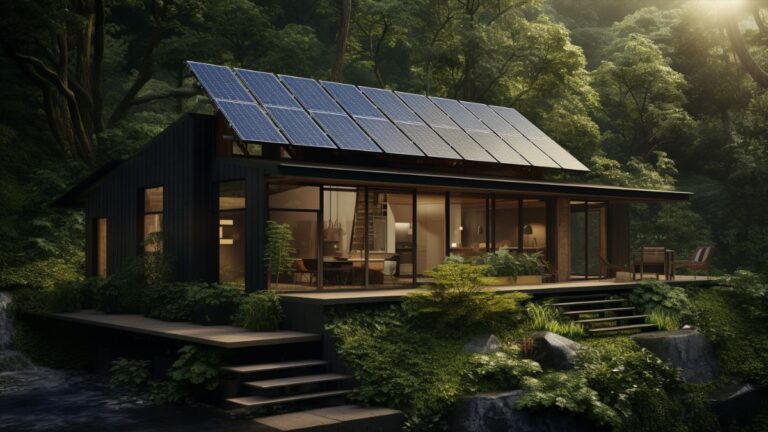
One Comment
Comments are closed.